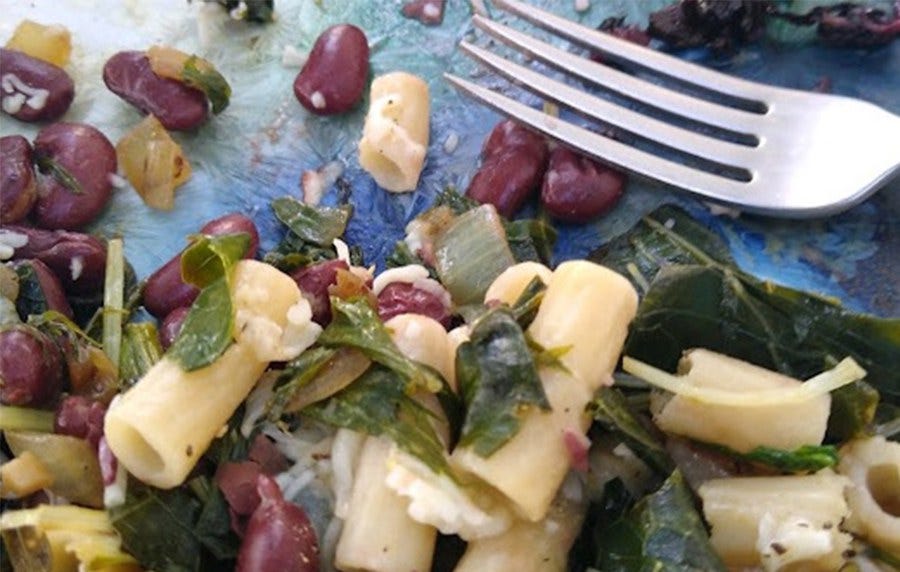
Mizuna: an Asian Green
During these winter days, as you leaf through colorful catalogs and draw up your seed orders, consider trying a vegetable that you have never before grown. Mizuna is an Asian green that is easy to grow and will make a healthy and flavorful addition to your meals.
A member of the brassica family, mizuna (Brassica rapa var. nipposinica) is also called Japanese mustard greens, California pepper grass, and spider mustard. While thought to have originated in China, mizuna has been grown in Japan for centuries. Mizuna means "water greens'' in Japanese. It has been a standard green on Japanese imperial banquet tables, which feature fresh seasonal ingredients skillfully prepared and artfully presented.
History of Mizuna
The traditional Japanese diet has been largely plant-based. In the early 7th century, based on the Gregorian calendar, Emperor Tenmu banned the eating of meat, fish, and shellfish. Eating fish was later allowed. Meat later became mainly reserved for special occasions. In 794, the capital of Japan was moved to Kyoto. Located on the island of Honshu, Kyoto's climate and geography are ideal for growing vegetables. Many of the traditional vegetables of Kyoto have been continuously cultivated for centuries, and their seeds are passed down from generation to generation. These vegetables are integrated into local customs and ceremonies and are considered part of Japan's traditional culture. In the 1970s, a crisis arose concerning the westernization of the traditional diet of Japan. Kyoto officials began working on a plan to protect their traditional vegetables from extinction. In 1989, 37 heirloom varieties of vegetables (including two extinct varieties) and three "sub-traditional" varieties were branded "Kyoyasai." Only varieties that originated prior to 1868 and are grown in the Kyoto prefecture (district) under strict environmentally friendly practices are eligible for the Kyoyasai branding. Along with mizuna, other Kyoyasai vegetables include Shogoin daikon, Shishigatani pumpkin, Kamo-Nasu eggplant, and Manganji pepper.
Growing Mizuna
Mizuna has long, thin, crisp stems and highly serrated leaves that grow in rosettes. There are several varieties of mizuna, and not all are considered Kyoyasai, 'Early' mizuna and 'Summer' mizuna both have light green stems with darker green leaves. 'Beni Houshi' and 'Japanese Pink' mizuna have purple stems and green leaves. 'Japanese Red Mustard' mizuna has green stems and dark purple leaves. All varieties prefer well-drained soil that is rich in organic matter. Their seeds are best sown directly into the garden. While the ideal germination temperature is 55° to 75°F, the seeds will germinate in temperatures as low as 40°F. Mizuna is both tolerant of light frosts and very slow to bolt. This makes mizuna an ideal vegetable for early spring or fall planting. Though tolerant of partial shade, it will grow best in full sun, which means at least 6 hours of sun per day. Follow the directions on the seed packet for planting depth and spacing. Apply supplemental irrigation if rainfall has not been plentiful. Mizuna may be harvested at any stage, from baby greens through full maturity. Harvest the entire plant by cutting it off near the ground. Alternatively, use the cut-and-come-again method by cutting the greens 2 inches or more above the ground. This method allows for regrowth and an all-season-long harvest. For best quality, harvest in the morning after the dew has dried but before the heat of the day softens the greens.

Using mizuna. Denise D'Aurora, Penn State Master Gardener
Using Mizuna
Once harvested, wash, bag, and store in a cool refrigerator where it should keep for more than a week. Mizuna can also be blanched and frozen for later use, as you would other greens such as chard and spinach. Both the stems and leaves are edible and nutritious. This green has antioxidant qualities, as it is a cruciferous vegetable in the brassica family. Mizuna is an excellent source of Vitamins A, C, and K-1, fiber, as well as numerous minerals. It is very versatile in the kitchen. Mizuna has a mild mustardy peppery flavor. Eat it raw in salads, especially the tender young leaves. Sauté mizuna stems and leaves with onions or garlic as a side dish. It is wonderful in stir fries and is a nutrient-rich addition to soups and stews. Substitute mizuna for basil or spinach in your favorite pesto recipe.
Mizuna can be purchased from most large seed companies. Many varieties are available. Mizuna is often added to their mesclun and stir-fry seed mixes. It can also be found and grown as micro-greens.
This wonderful Asian green will make an excellent addition to your vegetable garden this year. Even if you do not plant Kyoyasai seeds, whatever variety of mizuna you grow will bring the rich history and culture of Japan, and its flavor, to your dinner plate.
Link nội dung: https://blog24hvn.com/mizuna-a62716.html